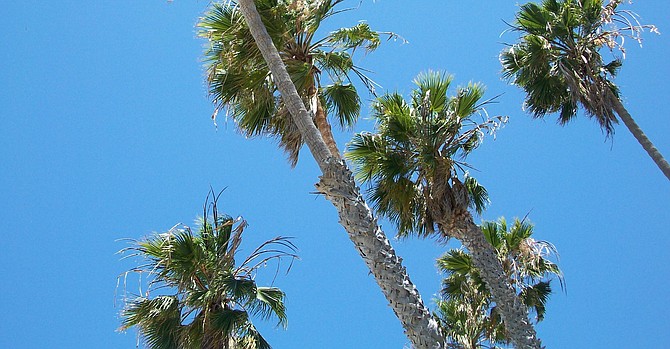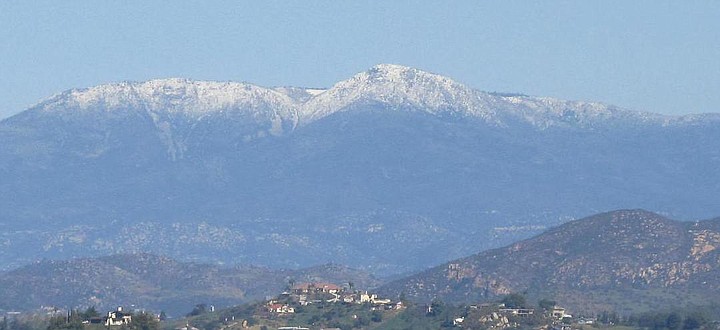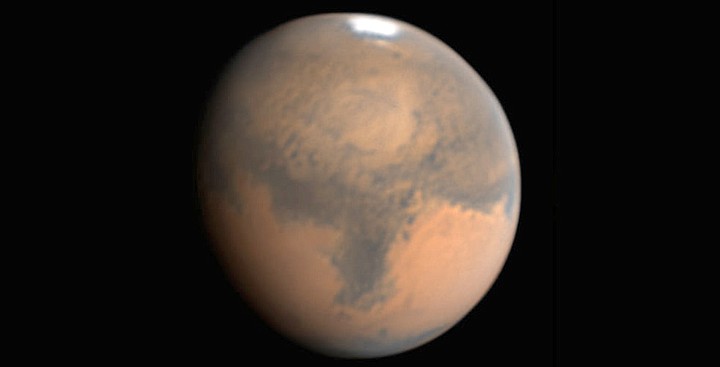 Facebook
Facebook
 X
X
 Instagram
Instagram
 TikTok
TikTok
 Youtube
Youtube

Late September brings Santa Ana winds, which may continue intermittently through the winter. Early Santa Anas are often responsible for coastal San Diego’s hottest and driest days of the year. Records show that 62 percent of the days at Lindbergh Field with 90-degree readings or higher have occurred during the months of September and October. The desert-like days are a consequence of dry air from a high-pressure area centered over Nevada or Utah moving across southern California’s coastal mountains toward a low pressure area offshore in the Pacific Ocean. West of the mountains the air sinks as it rushes toward the coast, heating (by compression) about 5 1/2 degrees Fahrenheit for every 1000 feet of descent. During a fullblown Santa Ana, gale-force winds rake the foothills downwind of the mountain passes, and San Diego’s coastal communities often experience temperatures that are among the nation’s highest.

Escaping the Heat of this season’s first couple of Santa Anas will not be easy — if you can’t be inside air-conditioned buildings at any rate. Along the coastline, where temperatures may reach the 90s, taking a dip in the surf solves the problem. Inland, the furnace-like heat is moderated only by increases in altitude. Head for the high places of the county — the mile-plus heights of the Palomar and Laguna Mountains, for example. You could climb a couple of the county’s loftiest peaks: Cuyamaca Peak (6512') in Cuyamaca Rancho State Park, or Boucher Hill (5438') in Palomar Mountain State Park. On peaks such as these during a Santa Ana wind episode, the thermometer registers about 25- 30 degrees lower than in the lowlands. Since the early phase of a Santa Ana sweeps away atmospheric water vapor and air pollution, hundred-mile vistas in every direction may be yours to enjoy.
Full Moon Thursday, October 1 (exact at 5:05 p.m. EDT). Once the Moon is up low in the east in twilight, look for yellow-orange Mars to come into view roughly a fist at arm's length to its lower left. They'll appear a lot closer together tomorrow.

Mars shines big, bright, and close. This week it rises in twilight. After dark it glares orange low in the east, as bright as Jupiter at magnitude –2.4 but yellow-orange to Jupiter's creamy white. Mars climbs higher through the evening and stands at its highest and telescopic best around 2 a.m. daylight-saving time, beaming down from Pisces high in the south. Mars passes closest to Earth on October 6. We're already getting the best view of Mars we'll have until July 2033.
The above comes from the Outdoors listings in the Reader compiled by Jerry Schad, author of Afoot & Afield in San Diego County. Schad died in 2011. Planet information from SkyandTelescope.org.


Late September brings Santa Ana winds, which may continue intermittently through the winter. Early Santa Anas are often responsible for coastal San Diego’s hottest and driest days of the year. Records show that 62 percent of the days at Lindbergh Field with 90-degree readings or higher have occurred during the months of September and October. The desert-like days are a consequence of dry air from a high-pressure area centered over Nevada or Utah moving across southern California’s coastal mountains toward a low pressure area offshore in the Pacific Ocean. West of the mountains the air sinks as it rushes toward the coast, heating (by compression) about 5 1/2 degrees Fahrenheit for every 1000 feet of descent. During a fullblown Santa Ana, gale-force winds rake the foothills downwind of the mountain passes, and San Diego’s coastal communities often experience temperatures that are among the nation’s highest.

Escaping the Heat of this season’s first couple of Santa Anas will not be easy — if you can’t be inside air-conditioned buildings at any rate. Along the coastline, where temperatures may reach the 90s, taking a dip in the surf solves the problem. Inland, the furnace-like heat is moderated only by increases in altitude. Head for the high places of the county — the mile-plus heights of the Palomar and Laguna Mountains, for example. You could climb a couple of the county’s loftiest peaks: Cuyamaca Peak (6512') in Cuyamaca Rancho State Park, or Boucher Hill (5438') in Palomar Mountain State Park. On peaks such as these during a Santa Ana wind episode, the thermometer registers about 25- 30 degrees lower than in the lowlands. Since the early phase of a Santa Ana sweeps away atmospheric water vapor and air pollution, hundred-mile vistas in every direction may be yours to enjoy.
Full Moon Thursday, October 1 (exact at 5:05 p.m. EDT). Once the Moon is up low in the east in twilight, look for yellow-orange Mars to come into view roughly a fist at arm's length to its lower left. They'll appear a lot closer together tomorrow.

Mars shines big, bright, and close. This week it rises in twilight. After dark it glares orange low in the east, as bright as Jupiter at magnitude –2.4 but yellow-orange to Jupiter's creamy white. Mars climbs higher through the evening and stands at its highest and telescopic best around 2 a.m. daylight-saving time, beaming down from Pisces high in the south. Mars passes closest to Earth on October 6. We're already getting the best view of Mars we'll have until July 2033.
The above comes from the Outdoors listings in the Reader compiled by Jerry Schad, author of Afoot & Afield in San Diego County. Schad died in 2011. Planet information from SkyandTelescope.org.
Comments